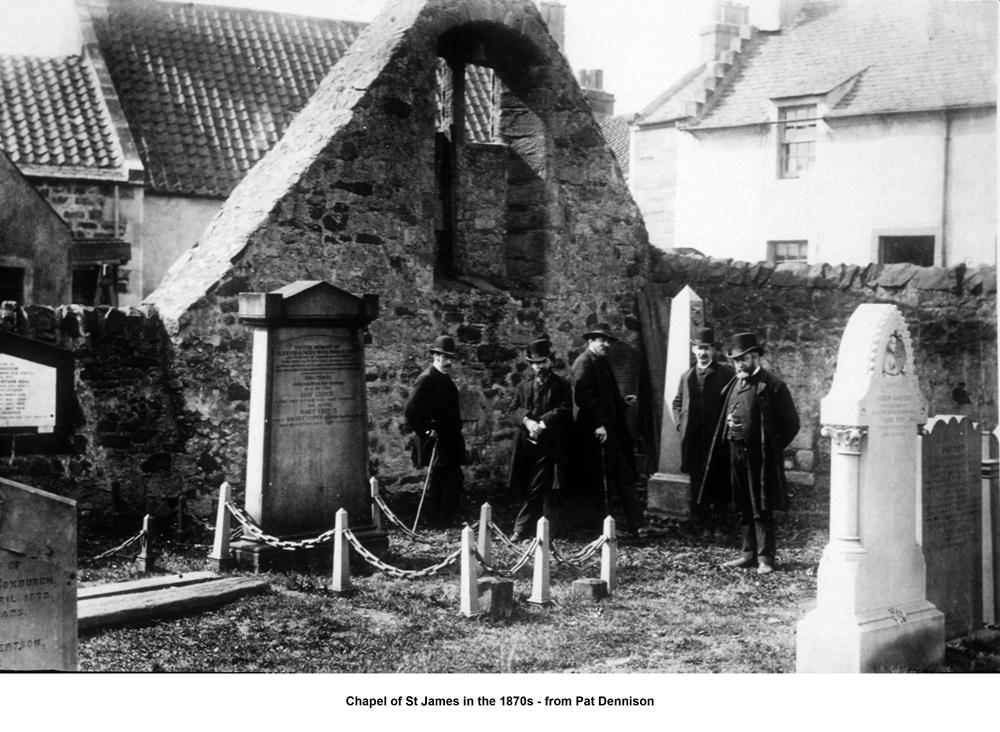St James’s Chapel
| < Intro | Δ Index | 1500 – no Village Church > |
Queen Margaret (c 1046 -93) encouraged pilgrims to visit the shrine of St Andrew in the settlement of the same name by giving free passage across the Forth. Their first port of call would have been the chapel for prayer along their route. After she herself was canonised in 1250, pilgrims took the same route to visit her shrine at Dunfermline Abbey.
The chapel, dedicated appropriately to the patron saint of travellers, was granted by Robert I (1306-29) to Dunfermline Abbey sometime between 1320 and 1322. But it had probably been standing for many years previously, as along with specific instructions that the chapel be provided with two chaplains, the charter specified also that the building should be repaired and it referred to possessions of the chapel belonging to it by ‘right and antiquity’.
There was a manse with a garden to the north of the chapel. The chapel also had two acres of land, thought to be to the west of the village, and pasturage for a horse.
Medieval royalty often crossed on the Queensferry Passage and it is known that James IV (1488-1513) visited the chapel and made offerings of fourteen shillings in both 1504 and 1507.
On Christmas night 1547, Sir John Luttrell, who was garrisoning the island of Inchcolm for the English, landed at North Queensferry and ‘burned the town’; it is very probable that the chapel was damaged.
After the Reformation, in 1572 the crown bestowed the chaplainry on Henry Boswell, son of a prominent Dunfermline burgess, to support him in ‘the study of grammar’ at Dunfermline’s grammar school. Ten years later, while still a student, he became named ‘vicar’ rather than chaplain and in 1584 he disposed of the two acres of land.
Little is heard of the chapel after this and it may well have ceased to function.
For its part in the opposition to the Cromwellian forces after the battle of Inverkeithing in 1651, North Queensferry was sacked and the chapel was reputedly left in ruins. Some time after this, precisely when is uncertain, the interior of the chapel became a cemetery.
 St James’s Chapel in the 1870s
St James’s Chapel in the 1870s
| < Intro | Δ Index | 1500 – no Village Church > |